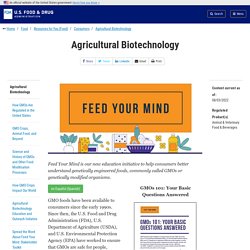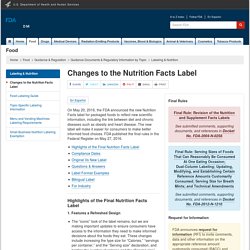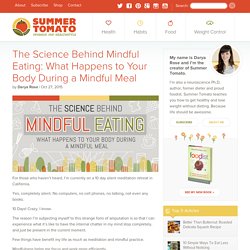

Efad factsheet practice and research a perfect dietetic match 2020. GMO. Feed Your Mind is our new education initiative to help consumers better understand genetically engineered foods, commonly called GMOs or genetically modified organisms.

GMO foods have been available to consumers since the early 1990s. Since then, the U.S. Food and Drug Administration (FDA), U.S. Environmental Protection Agency (EPA), and U.S. Infographics - EASO - Obesity day 2020. Advice about Eating Fish. FDA and EPA have issued advice regarding eating fish.

This advice can help women who are pregnant or may become pregnant - as well as breastfeeding mothers and parents and caregivers feeding children 2 years and older - make informed choices when it comes to fish that are nutritious and safe to eat. This advice supports the recommendations of the 2015-2020 Dietary Guidelines for Americans, developed for people 2 years and older. For advice about feeding children under 2 years of age, you can consult the American Academy of Pediatrics. The advice features a chart that makes it easier than ever to choose dozens of healthy and safe options and includes information about the nutritional value of fish. A set of frequently asked questions & answers provides more information on how to use the chart and additional tips for eating fish. Download the Advice (PDF: 472KB) Eating fish‡ when pregnant or breastfeeding can provide health benefits. Infographics For Dietitians – Dietitians On Demand. 12 Famous Philosophers and Their Guiding Principles.
Philosophy, the ancient study of wisdom, can often feel overwhelming to those who didn’t study the concepts and questions posed by some of the greatest thinkers to ever live.

But many of the thoughts from the likes of Socrates to more modern philosophers like Ayn Rand and Simone de Beauvoir can be used today as a means to guide us through life’s ups and downs. The term “philosophy” derives from the Greek word philosophia which translates to a “love of wisdom,” coined by pre-Socratic thinkers such as Pythagoras in the 6th century B.C. These ancient Greek philosophers were influential in laying the foundations for the modern world; searching for meaning in everyday life and shaping their musings into a system of thoughts documented in books and manuscripts, letters, plays, and other media.
Mood Food Infographic. 2018 Dieticians Social Media Info. Measured energy content of frequently purchased restaurant meals. Tests for diagnosing and monitoring non-alcoholic fatty liver disease in adults. Skills for the Future. History of modern nutrition science. Dariush Mozaffarian, dean1, Irwin Rosenberg, professor1, Ricardo Uauy, professor2 3Author affiliations Dariush Mozaffarian and colleagues describe how the history of modern nutrition science has shaped current thinking Although food and nutrition have been studied for centuries, modern nutritional science is surprisingly young. The first vitamin was isolated and chemically defined in 1926, less than 100 years ago, ushering in a half century of discovery focused on single nutrient deficiency diseases.
Research on the role of nutrition in complex non-communicable chronic diseases, such as cardiovascular disease, diabetes, obesity, and cancers, is even more recent, accelerating over the past two or three decades and especially after 2000. 1910s to 1950s: era of vitamin discovery By the mid-20th century all major vitamins had been isolated and synthesised (fig 1). 1950s to 1970s: fat versus sugar and the protein gap 1970s to 1990s: diet related chronic diseases and supplementation Key messages. Mediterranean Diet. The TEN STEPS to Successful Breastfeeding.
NNI Infographics. Statistics-Heart-Stroke Infographic 2018 American Heart Association. Eating disorders. World Breastfeeding Week. Why nutrition science is so confusing. [Infographic] From a certain perspective, nutrition science can seem like a mess.
![Why nutrition science is so confusing. [Infographic]](http://cdn.pearltrees.com/s/pic/th/nutrition-infographic-152634064)
From another, it illustrates the very nature (and beauty) of the scientific process. Here we’ll explain why nutrition science is so confusing at times. We’ll also explain why, in the grand scheme of things, that’s okay. I recently participated in a health and fitness roundtable at a large event. During the discussion, one smart, educated, PhD-trained expert complained about the state of nutrition science.
צריכת בשר - ישראל ב-OECD. FDA Changes to the Nutrition Facts Label. Final Rules Request for Information FDA announces request for information (RFI) to invite comments, data and other information on the appropriate reference amount customarily consumed (RACC) and product category for flavored nut butter spreads (e.g., cocoa, cookie, and coffee flavored), as well as products that can be used to fill cupcakes and other desserts.

FDA announces request for scientific data, information and comments to help it determine whether certain fibers should be added to the definition of “dietary fiber” published as part of the Nutrition Facts label final rule. The Science Behind Mindful Eating: What Happens to Your Body During A... For those who haven’t heard, I’m currently on a 10 day silent meditation retreat in California.

Yes, completely silent. No computers, no cell phones, no talking, not even any books. 10 Days! Crazy, I know. The reason I’m subjecting myself to this strange form of amputation is so that I can experience what it’s like to have the internal chatter in my mind stop completely, and just be present in the current moment. Sleep Duration Recommendation.